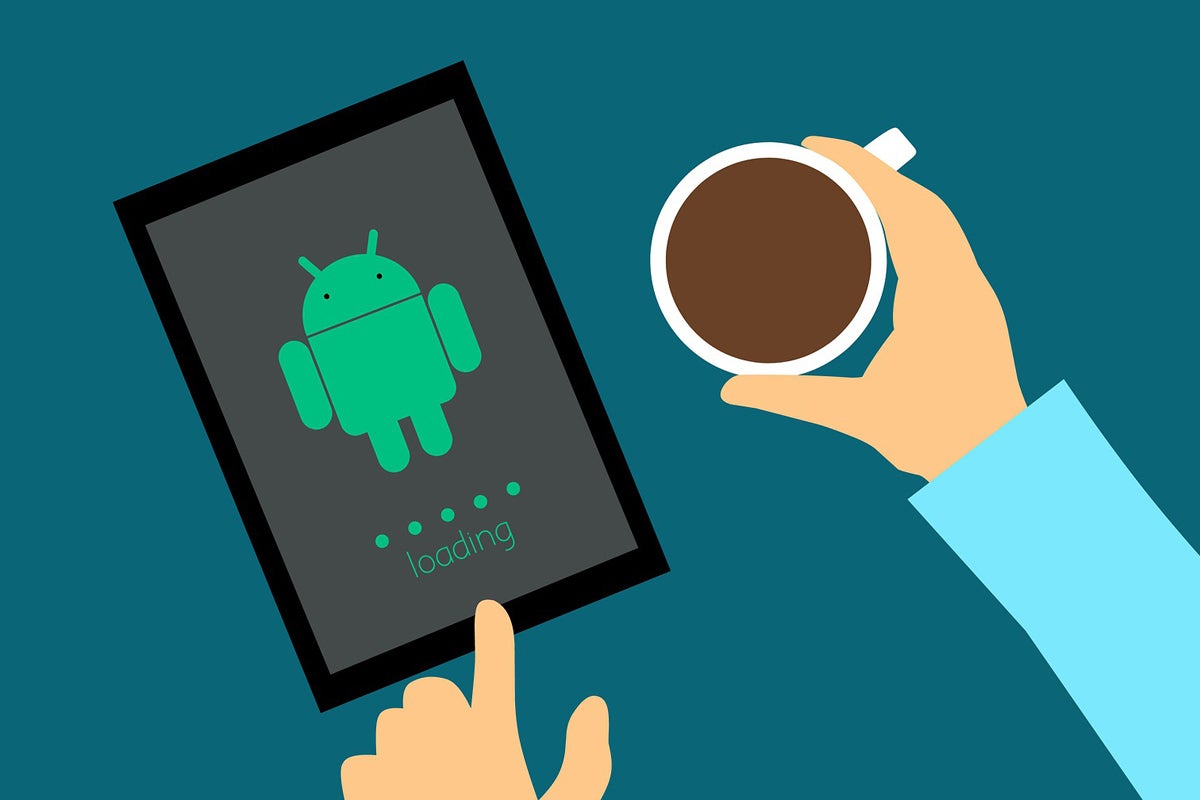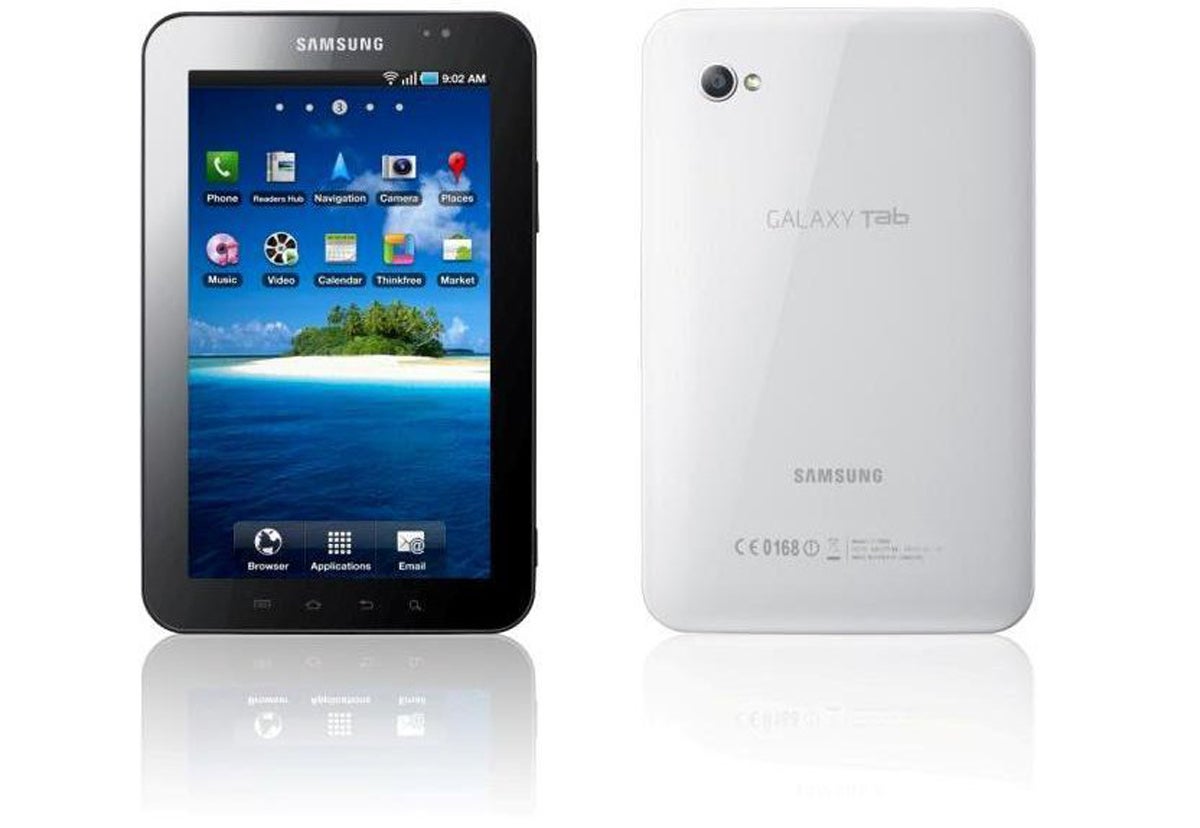The Android hardware truth Google won’t tell you

As the gatekeeper of Android, Google frequently finds itself in an awkward position. The company has its own platform-wide priorities and ways it wants its ecosystems to evolve, but it also has the goals of all the third-party manufacturers that create hardware for those virtual environments to consider.
And guess what? Google’s priorities and the desires of the companies making the bulk of the devices don’t always align. And that forces Google to do a delicate dance in order to push forward with its own plans without saying anything that’d go directly against a device-maker’s interests.
Well, it’s time to stop beating around the bush and just say what Google won’t openly acknowledge: You should not be buying an Android tablet in 2020. Period.
It’s a pretty hefty meatball to toss out there, I realize, and a funny thing to hear in a column about Android — but it’s something we’ve been building up to for quite a while now. And if you’ve been paying careful attention, it really shouldn’t come as that much of a surprise.
The reason behind it, in fact, is actually quite simple.
The Android tablet’s awkward arc
Before we get into the true trouble with Android tablets today, we need to briefly revisit their origins — because Android tablets really are an unusual category of devices with a complicated beginning, and that awkward start informs a lot of what’s happening now.
Back in the early days, y’see, Google didn’t have a great way for Android to exist in a “big-screen” form. (I put “big-screen” in quotes because the earliest Android tablets weren’t much bigger than our current Android phones. Hey, it’s all relative.) So in 2010, after Apple unveiled its first magical and revolutionary iPad, Android device-makers desperate to compete in the newly established arena rushed to cobble together their own half-baked answers.
Most prominently, Samsung spewed out its inaugural Galaxy Tab — a 7″ slate that ran Android 2.2, worked exactly like a phone, and even let you make and receive calls with your own SIM card in certain scenarios. So, yeah: It was more or less just a big phone.
 Samsung
SamsungEarly the next year, Google came out with its Android 3.0 Honeycomb software — a tablet-only release that introduced a totally new foundation for Android to exist in a large-screen form. The first true Android tablets, including the classic Motorola Xoom, followed.
Android 3.0 was actually an admirable framework for a whole new kind of mobile-tech experience — one in which the core Android interface was completely reimagined in a way that took advantage of the newfound screen space and created a totally different type of productivity-minded environment.
But it wouldn’t last for long. Apple had already made a serious splash with its iPad, and Google did its usual Google thing — first, failing to get developers on board quickly enough to make a good first impression with how apps operated in its newly scaled-up environment, then quickly losing its focus, pivoting away from its original vision, and ultimately just letting the idea of the Android tablet languish without any movement forward.
Despite some broad misunderstanding, Google actually had a sound original vision for how Android apps and Android itself should work on larger devices — but the whole thing just never quite came together. And despite Android’s growing dominance on the phone front and the endless array of advantages the platform possessed, it never managed to attract any meaningful number of takers in the tablet domain.
By 2016, Google had by all counts given up on the idea of the Android tablet. Android tablets still existed, of course, but Google wasn’t doing much to advance or promote ’em. And it became increasingly clear that its own self-made Pixel C convertible of that time represented both the end of an era and a glimpse at what was next.
The Android tablet transition
So there we were, in 2016. Android tablets were already starting to feel like they were on life support.
And at the same time that the traditional Android tablet was withering, Google’s Chrome OS platform was thriving — and evolving. While observers were mistakenly obsessing over how and when Google would “kill” Chrome OS or merge it in some way with Android, Google was actually aligning its two platforms and preparing them to coexist in some pretty interesting ways.
Little by little, Chrome OS grew more Android-like in both interface and capability, and Chromebook hardware grew even more versatile, too — with early touch-enabled displays giving way to convertible devices and straight-up slates with optional keyboard attachments. It all seems commonplace now, but Chrome OS was doing this stuff way before it was in vogue (and at a time when most pundits were questioning and generally pooh-poohing its purpose).
A couple years back, I noted this trend and pointed out how the Chromebook was shaping up to be the “new Android tablet.” And here we are today: Chromebooks are now fully capable of running Android apps — an experience that isn’t always optimal, mind you, but is perfectly serviceable. It’s a criticism that applies just as much to Android apps on an Android tablet, really. (And between web apps, progressive web apps, and maybe even the occasional Linux app, you often won’t opt for an Android app when using a Chromebook, anyway. They’re more of a supplement than the main attraction in that environment, and for productivity purposes in particular, that feels like exactly how it oughta be.)
Chromebooks now have Google Assistant integrated in at the system level, too, which opens up the door to some powerful possibilities similar to and sometimes even exceeding what’s possible within Android itself. And a Chromebook provides a desktop-caliber work environment no traditional Android tablet can match, particularly when you’re using a device that’s designed to switch seamlessly between the laptop and tablet form.
Most important to the concerns of any business-minded user, though — and the reason I was inspired to write this story now: Chromebooks actually get updates. They get ’em quietly and automatically, directly from Google, every few weeks — regardless of what company made the devices. And as of last fall, they get updates for roughly seven to eight years from the time of their launch.
Those updates, just like their equivalents on Android, contain critical enhancements in the areas of security, privacy, and performance in addition to their more noticeable front-facing interface changes and feature additions. No serious business user should be using a device that doesn’t receive them in a timely and reliable manner.
And — well, let’s think about how Android tablets fare in that domain. We talk a lot about the sad state of Android upgrades on the phone front, despite misleading narratives to the contrary, but for as bad as most device-makers do with Android phone upgrades, they do even worse when it comes to keeping their tablets up to date.
Take, for instance, Samsung’s Galaxy Tab S6 — the company’s top-of-the-line flagship tablet that’s positioned as a “PC-like” two-in-one productivity system. It started at $650 when it launched last fall and is listed as the “best Android tablet” in a lot of review-based rankings.
The Galaxy Tab S6 got upgraded to the current Android 10 operating system software in the U.S. just this month — in May of 2020. That’s roughly eight months after Android 10’s release — eight months that owners of Samsung’s top-tier productivity tablet were using an outdated and not optimally secure or privacy-protected product. If we’re lucky, maybe, maybe it’ll get one more major OS update before it’s abandoned. And somehow, that’s still better than how most other Android tablets are faring.
At the same time, any random $200 Chromebook is getting both major OS updates on a monthly basis and smaller security patches every two to three weeks and will continue to do so for another several years. See where we’re heading with this?
Plain and simple, buying an Android tablet is setting yourself up for disappointment — when it comes to both performance and capability and when it comes to the critical areas of privacy, security, and ongoing software upkeep. So when people ask me which Android tablet they should buy, you know what I tell ’em nowadays? They shouldn’t buy one at all. If they want a Googley, Android-connected experience in a large-screen form, they should consider a decent convertible Chromebook instead.
The exception — and Chrome OS’s remaining weakness — is in the area of super-affordable, small-slate tablets. You can get a crappy Amazon-made Fire tablet for 50 bucks! And Chromebooks have yet to come around to address that demand. So if you’re looking for a dirt cheap video screen or, say, something for a child to use, the low-end Android tablets might still be your only real option.
When it comes to productivity and actual work-friendly devices, though — situations where the computing experience itself matters and where having an optimally secure, privacy-conscious, and performance-optimized environment is important — the common advice out there is increasingly misguided. The best Android tablet isn’t an Android tablet at all. It’s a Chromebook.
One last footnote to all of this: Remember that Pixel C we talked about a minute ago — the final Android tablet effort that Google put into the world? Signs suggest it was actually supposed to have run Chrome OS and that the software just wasn’t quite ready in time for its debut. It should have been the first Pixelbook, by all counts — the platform-defying device that steered us away from Android as the large-screen environment while still retaining its most worthwhile elements. But since the product was a touch ahead of its time, Google seemingly slapped Android on it instead and tossed it out as one last half-hearted hurrah.
That was almost certainly the moment when things began to shift, even if we didn’t fully realize it at the time. And at this point, despite the companies that keep pumping out Android-running slates and putting ’em on store shelves, the traditional Android tablet lives on mostly as a legacy holdout — and mostly for people who don’t realize that a better, more contemporary option exists.
source: computerworld